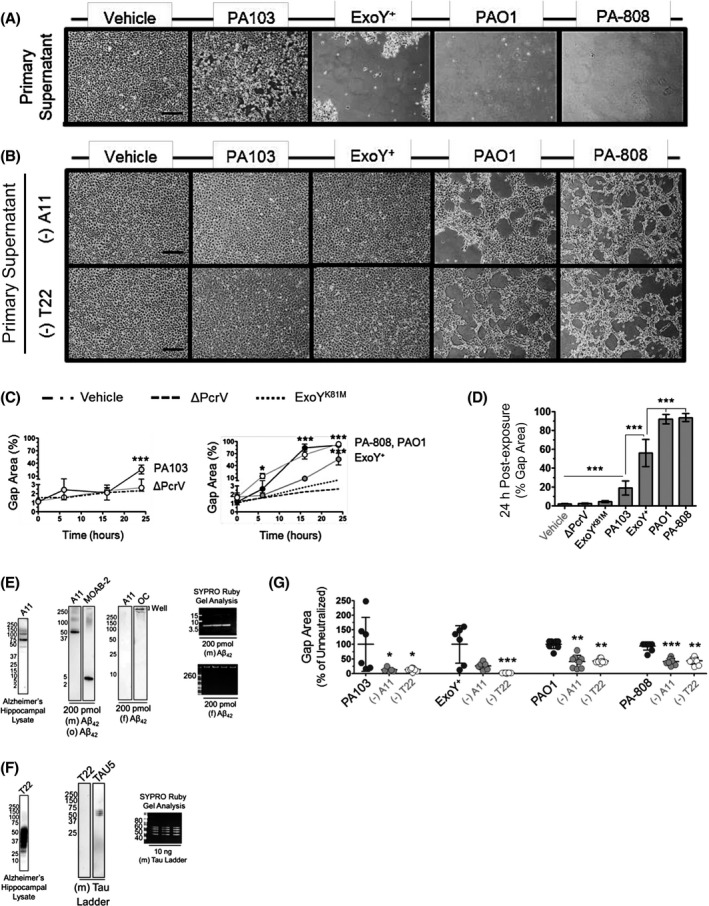Figure 3.

T3SS‐competent infection elicits transmissible and injurious amyloids from PMVECs. Naïve endothelial cell monolayers were treated with (A) vehicle or bacteria‐free infection supernatants generated from PMVEC intoxication with either ExoU/T (PA103), ExoY alone (ExoY+), and ExoS/T/Y (reference strain PAO1 and clinical isolate PA‐808). Neutralization of infection‐derived supernatants with anti‐pan oligomeric amyloid antibody (A11) or anti‐oligomeric tau antibody (T22) was used to determine the contribution of amyloids to the transmissible injury arising from the intoxication of PMVECs with T3SS effectors, as illustrated by representative images of the 24 hours time point in (B) with interendothelial gap quantitation presented in (G). The (‐) indicates infection‐derived supernatants were treated with antibodies targeting either oligomeric amyloid (A11) or oligomeric tau (T22), respectively, that were subsequently pulled‐down. Quantitative results from the imaging time course of untreated supernatants are plotted by (C) total gap area across all time points and (D) total gap area at the 24 hours time point. n ≥ 6 (6‐9) with ≥ three technical replicates for each individual experiment; mean ± SEM; two‐way ANOVA with Bonferroni post hoc. *P < .05, **P < .01, ***P < .001. The specificity of the A11 antibody for the oligomeric conformation of amyloids was validated against monomeric ((m) Aβ42), oligomeric ((o) Aβ42), and fibrillar ((f) Aβ42) conformations of recombinant rat Aβ42 in (E). The T22 oligomeric tau antibody was validated against a recombinant ladder of the six monomeric isoforms of neuronal tau in (F). Images of immunoblots are representative of ≥ three representative blots. G, Results of oligomeric amyloid neutralization studies are quantitatively expressed as percent gap area as normalized to corresponding untreated supernatants. n ≥ 6 (6‐9) with ≥ three technical replicates for each individual experiment. Kruskall‐Wallis with Dunn's post hoc; mean ± SD; *P < .05, **P < .01, ***P < .001. Scale bars = 200 µm
